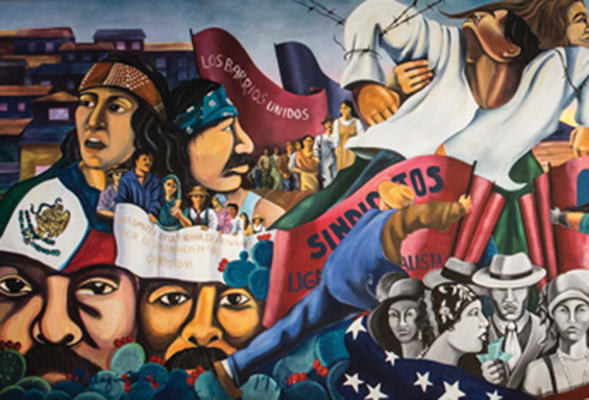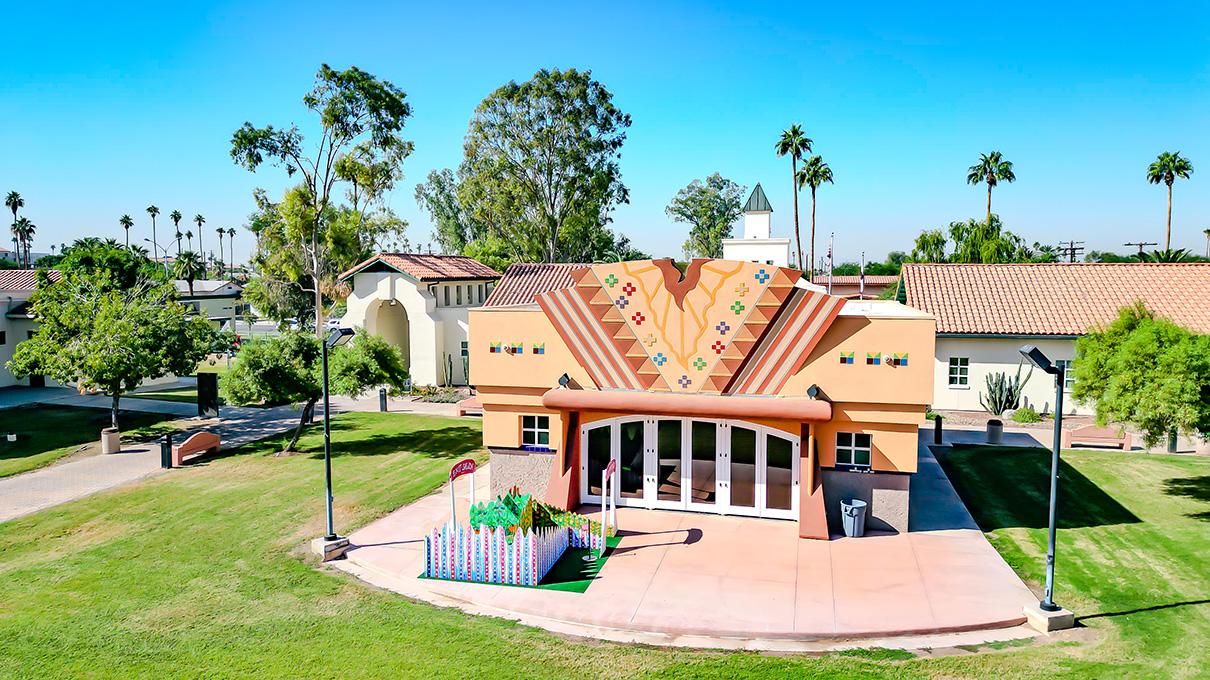Chicana and Chicano Studies at 50
Created at a time of multiple social upheavals, the department has developed an international research scope while keeping a close connection with the surrounding community.

Throughout its history, San Diego State University’s Department of Chicana and Chicano Studies (CCS) has reflected issues of its time and has attempted to meet the needs of the surrounding community.
In 1969, it meant embracing the movement to promote Chicano civil rights. Students and faculty joined campaigns off campus that led to the creation of Chicano Park and Balboa Park’s Centro Cultural de la Raza, now focal points of ethnic pride.
Fifty years later, the department is deeply immersed in border and transnational issues, and it has made rich contributions in the arts and research to the San Diego border region.
Its timeline spans a period from when enrollment at San Diego State College included fewer than 100 Mexican Americans, as the nomenclature of the era typically identified them, to a university headed by a Latinx president, Adela de la Torre, and now recognized by the U.S. Department of Education as a Hispanic Serving Institution.
Addressing a population that had long been ignored, the program initially known as Mexican American Studies had to be assembled from scratch, with community input. “It was almost impossible to create such a department without your community,” said chair María Ibarra, who has taught in the department for 22 years. “Part of what you wanted to do was to get that community into the public university.”
Richard Griswold del Castillo, a former chair of the department who was recruited to join the faculty in 1974, noted the push for its creation came amid the concurrent civil rights, women’s, and antiwar movements of the ‘60s.
“It was a revolution of young people,” Griswold said, “that felt that things had to get better and they were going to lead the way in making the changes that needed to be made.”
Smooth path
Uprisings at other campuses, including a sometimes violent, five-month student strike at San Francisco State University centered on issues of ethnic studies and representation, may have paved a smoother course for creation of the new program in San Diego, Griswold said. President Malcolm Love easily signed off on the proposal.
Community members who provided some of the impetus understood public education “had not really properly addressed the needs of Mexican-American kids,” Griswold said. In turn, the new program provided a way for the community to be in dialogue with the university.
In 1975, the program was elevated to an academic department in the College of Professional Studies. The name change to the Department of Chicana and Chicano Studies came in 1998. A graduate program was developed in 2005.
Today, Ibarra said, there’s a stronger Central American presence in the department as it has evolved to address the broader Latinx population.
The department has also developed a distinct feminist emphasis. Ibarra herself has written on women immigrants from Mexico, focusing specifically on those working as elder care and hospice care providers. Likewise, faculty member Victoria Gonzalez-Rivera has written extensively on women’s organizations in Nicaragua.
Another faculty member, Norma Iglesias-Prieto, is a pioneer in the field of Mexican women’s work in U.S.-Mexico border maquiladoras. Adelaida Del Castillo, the first woman chair of the department, wrote a groundbreaking reinterpretation of a key female figure in Mexican history known as Doña Marina, or la Malinche. Del Castillo’s interpretation is now the standard one in the study of the Spanish conquest of Mexico.
Professor Roberto Hernández, a local San Diegan raised on the border, has written extensively on the history of violence along the U.S.-Mexico border and such contemporary issues as migrant detention centers.
International scope
In addition to teaching and research, CCS faculty assisted in establishing two major research archives at SDSU, including a collection of records from the Chicano civil rights movement of the ‘60s and ‘70s.
And as part of its increasing emphasis on transborder issues, the department in 2011 created a U.S.-Mexico Borderlands Visiting Scholar Program aimed at promoting an exchange of ideas with the resident faculty and students.
In addition to addressing the long history of racism against Mexican Americans and other Latinx groups in this country, “We write about beautiful things, too,” Ibarra said, pointing to a wide variety of output in arts and literature. “We try to…either bring some of these voices, or capture those voices through our research.”
As part of its 50th anniversary celebration, the department co-sponsored a documentary-style play on immigration, “Just Like Us,” and it will commemorate the Day of the Dead with an altar in the Chicana/o Collection section of Love Library, on display Nov. 1-15, spotlighting civil rights advocates from the department and across the nation.
An anniversary community celebration dinner and program is scheduled for March 21, 2020, at Parma Payne Goodall Alumni Center.


